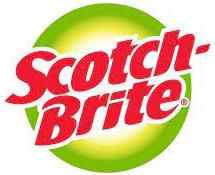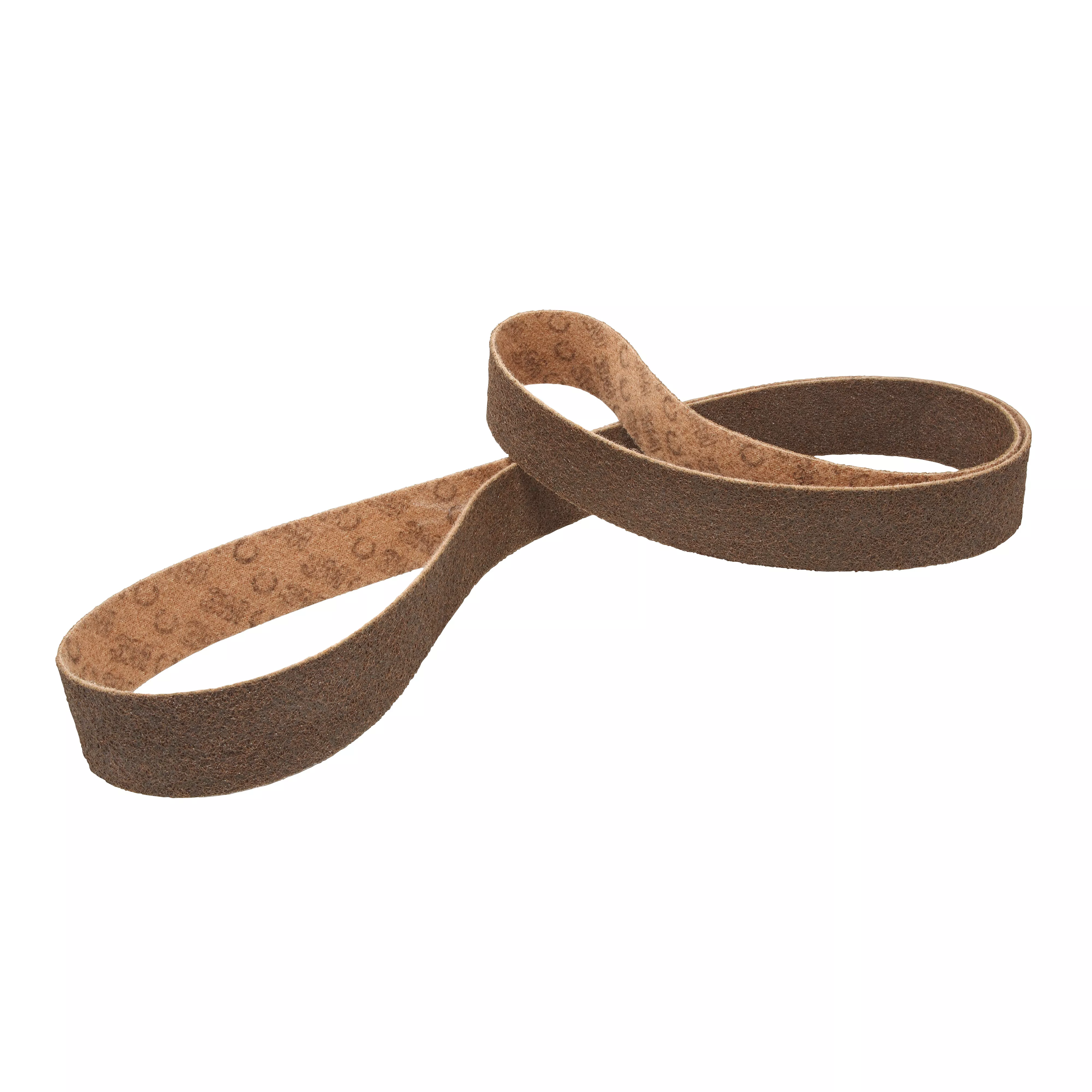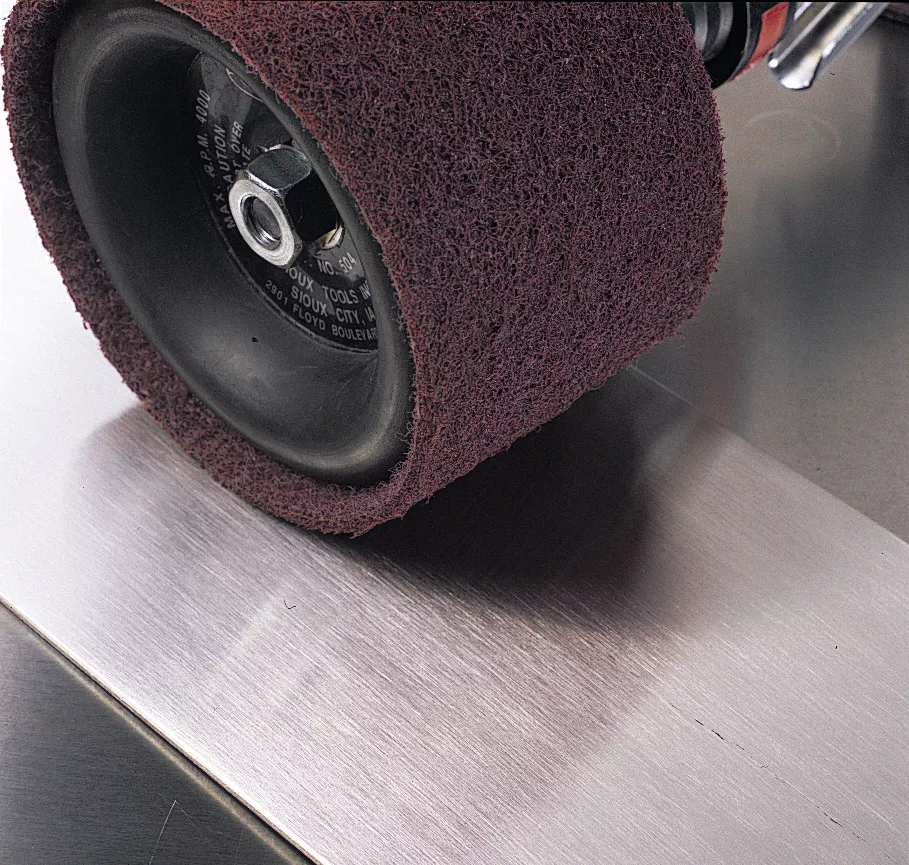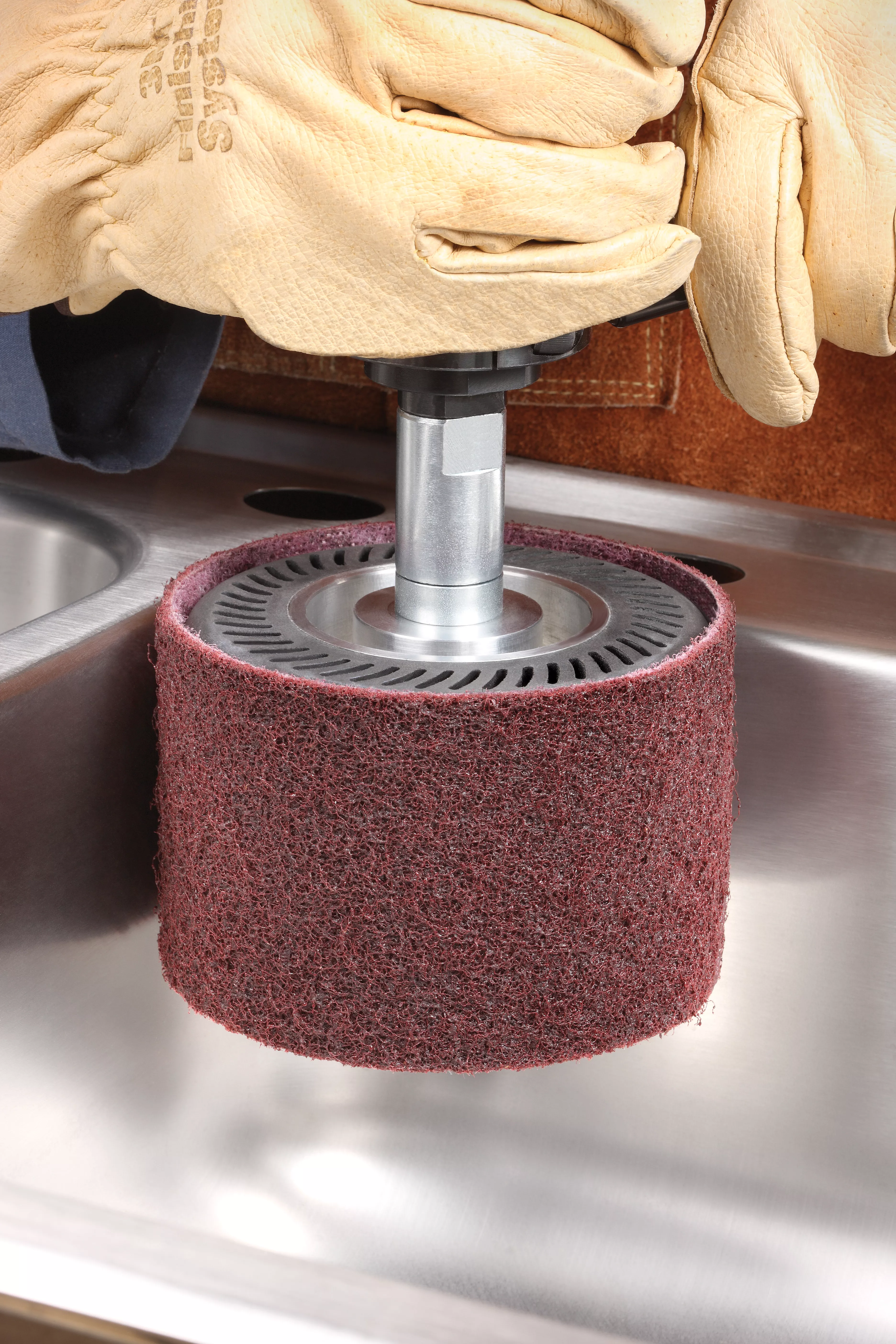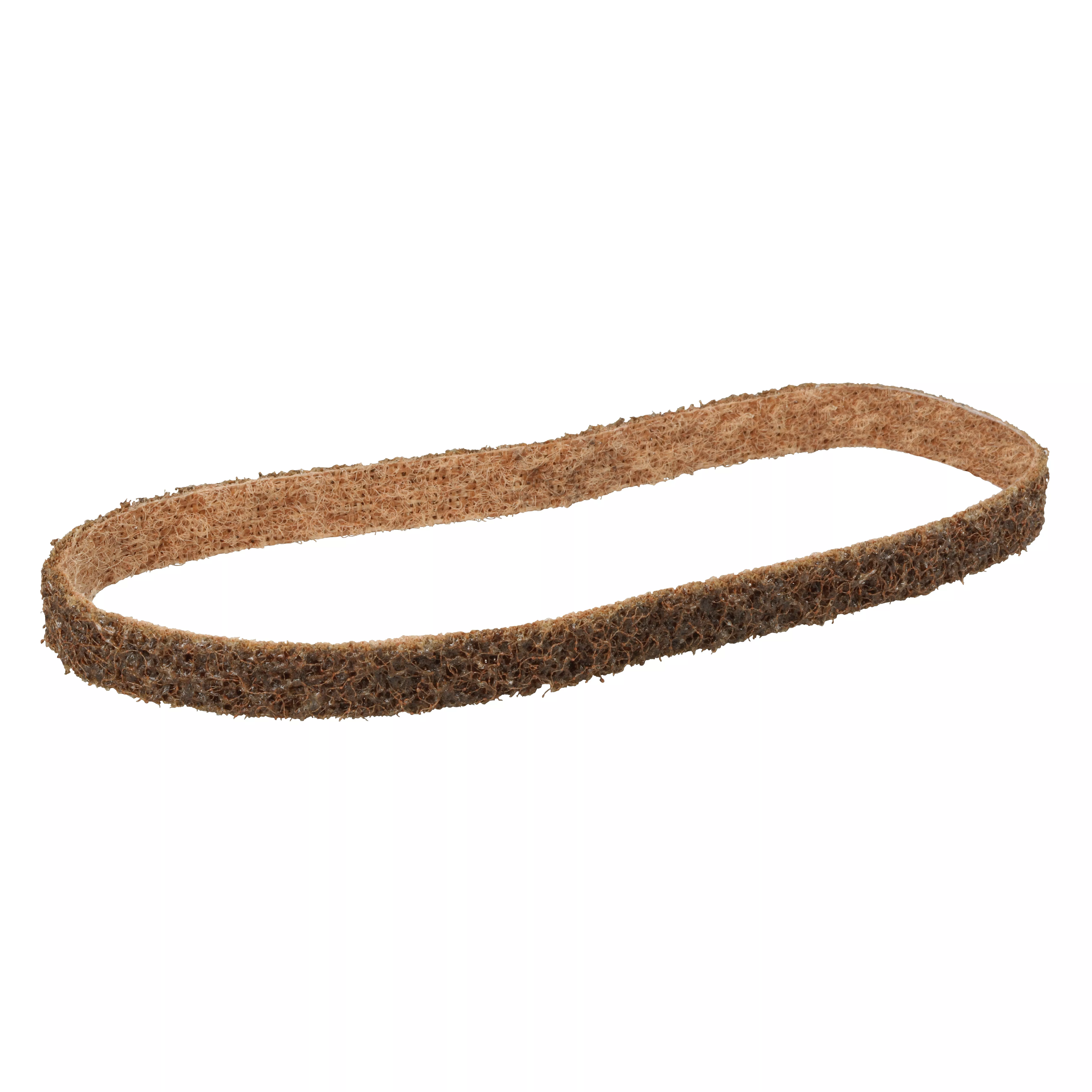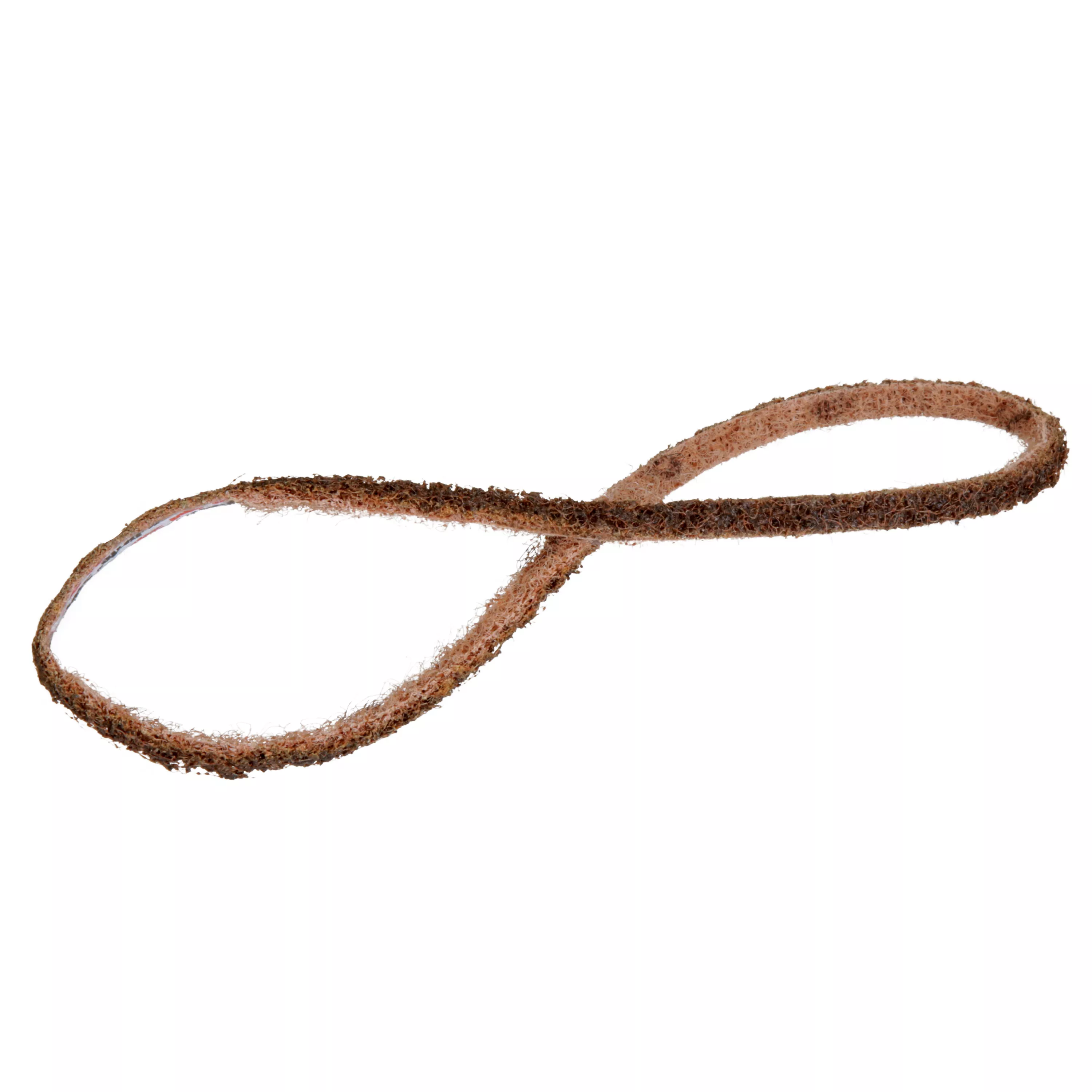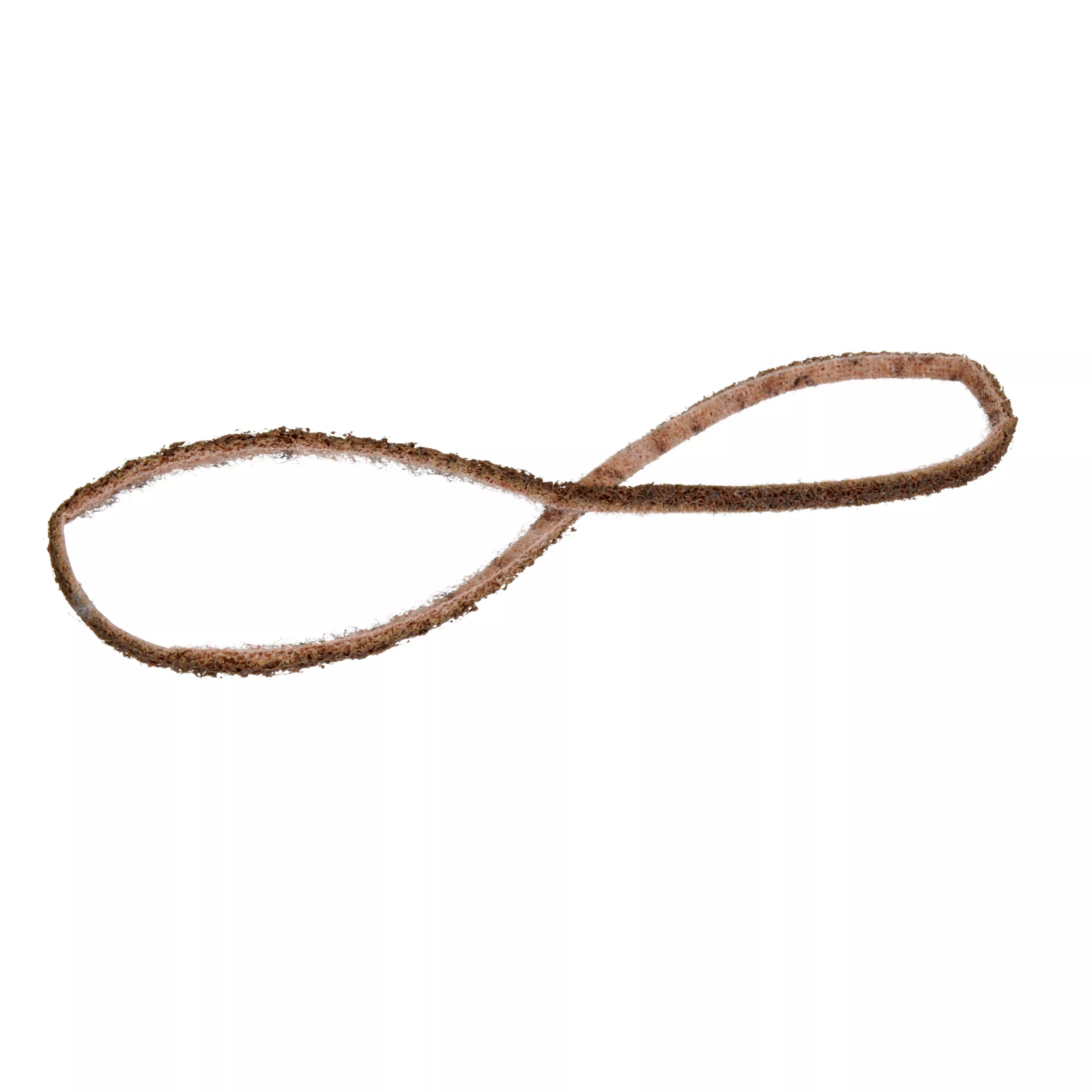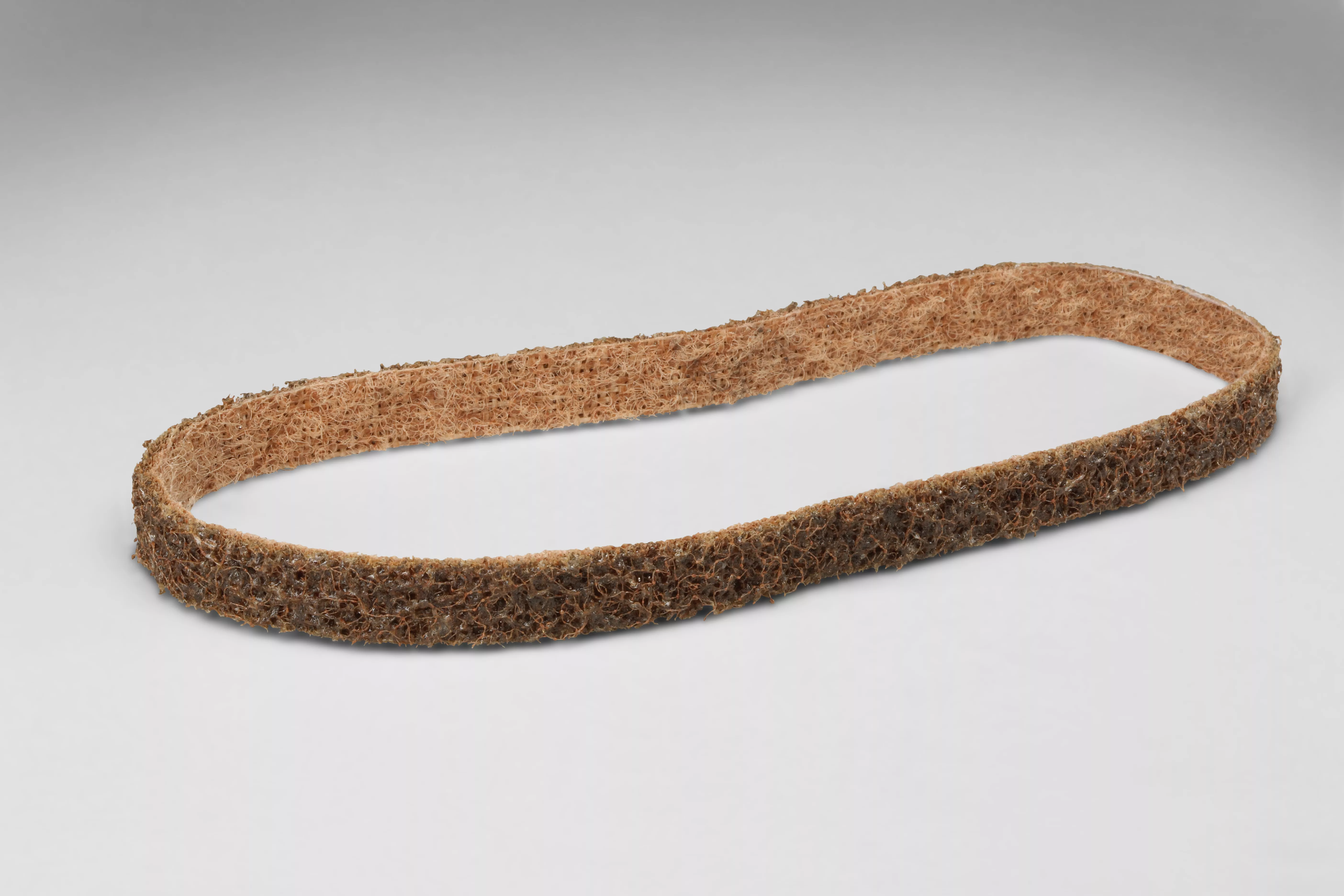| SKU | 7000120689 |
|---|---|
| Legacy SKU | 61500064599 |
| UPC | 00048011142845 |
| Product Number | SC-BS |
Scotch-Brite Surface Conditioning Belt is a durable belt engineered to perform detail work such as blending, blending corners, cleaning, contour finishing, deburring, deburring edges, fine finishing, flat finishing, setting the grain, stainless steel finishing, and attaining straightline-brushed finishes on a variety of metals.
- Nonwoven, surface conditioning belts clean, blend, deburr and finish
- Reduced loading and heat build-up allow extended operating time and consistent surface conditioning results
- Conformability allows abrasive to stay in contact with complex-shaped parts in robotic processing
- Reinforced backing and nonwoven open web material provide superior flexibility for detail work, over contours and edges
- Removes surface imperfections, grind lines, mill, and other marks
Product Dimensions |
Imperial | Metric |
| Weight | 0 NULL | |
|---|---|---|
| Width | 0 null | |
| Length | 0 null | |
| Height | 0 null |
Shipping Dimensions |
|
| Weight | 2.99983 lb |
|---|---|
| Length | 12.59843 in |
| Width | 12.48031 in |
| Height | 9.29134 in |
| Color | Brown |
|---|---|
| Maximum Speed | 6,500 ft/min |
PRODUCT FAQ
-
What kind of surface can I use the Scotch-Brite™ Surface Conditioning Belt on?
The Scotch-Brite™ Surface Conditioning Belt is best suited for cleaning and finishing virtually all types of metal surfaces, including carbon steel, stainless steel, aluminum, bronze alloys, brass and copper.
-
How long does the belt last?
The lifespan of each belt depends on factors like usage frequency as well as material that it's used on. However in general conditions these belts are durable and tend to last for many uses.
-
What does CRS stand for in 3M’s A CRS 3x18inch product code?
The letters "CRS" represent "Coarse". This means it's designed to remove burrs or heavy corrosion without damaging the underlying surface as medium grades might do.
-
How many belts come in a package?
There are 10 pieces within one case which is typically sufficient enough for most individual jobs or small operations.
-
. Can I get replacement parts if I need them?
. Of course! If you find yourself needing more belts than what came with your purchase simply reach out to us so we can quickly supply some replacements before you know it! Our customer support services are always available at any time via phone or email just let us know.
Scotch-Brite™ Surface Conditioning Belt is a versatile abrasive that is effective in removing coarse grind lines, mill marks, or small burrs left by cutting tools or conventional abrasives. These abrasive belts come in various widths and lengths and are suitable for different belt sanding tools for both wood and metal applications.
Ideal for Robotic FinishingScotch-Brite™ Surface Conditioning Belts are highly conformable and consistent, making them an excellent option for robotic metal finishing. They can produce a spec-required, aesthetic finish when used in both manual and robotic processing.
Choose the Right Belt for You3M offers a wide selection of belts that can fit most industrial belt sanders. Wide belt sanders are ideal for sanding and finishing large wood panels. Medium-width belts are suitable for edge or portable belt sanders for sanding or blending wood pieces such as cabinet doors. Narrow belts are used with file tools in metalworking to access small areas or inside corners.
Hard-Working Minerals: Aluminum Oxide and Silicon CarbideScotch-Brite™ Surface Conditioning Belts are manufactured with either silicon carbide or aluminum oxide abrasive mineral. Silicon carbide is a synthetic mineral that is very sharp and commonly used for low-pressure applications such as paint prep and finishing. Aluminum oxide is a hard, blocky mineral that provides high cut-rate and long life. While silicon carbide breaks down faster than aluminum oxide, it produces a finer finish.
An Alternative for Wheels and DiscsBelt sanders are used for rapid grinding, sanding, and finishing on various surfaces. Sanding wheels and discs may clog quickly, making them less efficient, depending on the material being worked. Belt sanders continue to sand without clogging because small grooves in the abrasive belt open as they go around the arc of the drive wheel.


